Do you feel like your home theater is lacking in bass tones? The highs and the mids are decent, but the low-frequency response is weak and not at all punchy? Well, you need to get an external subwoofer to handle the low-end. But what if there isn’t enough space for it in the room? In that case, an in-wall woofer might be the perfect solution for your sound system.
The Best in wall subwoofer can be hidden in the wall(s) (or the ceiling) and will greatly improve the bass quality, making your favorite tracks “pop”. When treated properly, these loudspeakers will serve you for many years, if not decades. So, which brand should you trust with this? What are the key factors that define how good a woofer is? Join me, and let’s find out!
Table of Contents
Best in wall subwoofer Review
1. Monoprice – Best rated in wall subwoofer
When it comes to in-wall subwoofers, the #1 concern for most people is the whole wall-cutting routine. In some cases, that can take hours. The same goes for wiring. However, that won’t be a problem with Monoprice. Specifically designed for easy installation, it requires very little effort to mount and get connected. As long as you’ve got at least 3.6 inches of space behind the wall, this woofer will fit.
The included instructions will help you handle the process. Another standout feature is the high-grade aramid-fiber driver. It ensures minimal distortion at high volumes and delivers a clean, sharp low-end output. Sadly, while the bass does, indeed, sound good, Monoprice is slightly behind the competition in terms of that low-end depth. On the bright side, you’ll get a paintable grill, 300W of peak power, and lots of different designs to choose from.
The Pros:
- Premium aramid fiber driver for minimal distortion
- Fast, hassle-free installation in less than 3 minutes
- Available in different designs, sizes, and configurations
The Cons:
- Lacking a bit in low-frequency depth
Verdict
Monoprice is a safe bet for the average home theater sound system. It can easily fit in any 4-inch wall and boasts a premium aramid-fiber driver. Fast installation, a decent power output, and a dozen of different configurations are its biggest pros. However, it lacks below-40Hz “oomph”.
2. OSD – Best wall mount subwoofer
Just like the previous in-wall woofer, OSD packs 300W of peak power and can fill out a big room with stomping bass. Again, it’s fully paintable and features a minimal-distortion design for an accurate representation of the low-end. On top of that, this unit is a combination of a standard-issue woofer and a radiator. Together, they produce a deep and rich low-frequency response. Keep that in mind if you like to listen to bass-heavy music.
Another big pro: thanks to the minimalistic design, vibration/shaking is reduced to a minimum – this also contributes to the excellent sound quality. There is one major downside, though: OSD is not particularly cheap. Compared to the other subs on the list, it’s two or even three times more expensive. However, if you’re looking for a premium in-wall subwoofer, this home audio speaker won’t disappoint you.
The Pros:
- Woofer + radiator combination for max efficiency
- Incredibly deep, rich bass-frequency response
- Minimal vibration thanks to the compact package
The Cons:
- The most expensive woofer on the list
Verdict
OSD is one of the best in-wall subs for a home theater. The top-notch woofer and radiator ensure a satisfying low-frequency response. So, if you’ve been missing those low-end notes and are craving for that deep, punchy bass, this could be a reasonable investment.
3. Theater Solutions – Best in wall subwoofer for home theater
Next up, we’ve got Theater Solutions – another name that can be trusted with your home audio equipment. This in-wall-subwoofer is designed and crafted in the US and meets the country’s tough industry standards. Plus, it features brick-strong resistance to water (or, rather, moisture), which tends to be an issue with woofers. The butyl rubber surround, in turn, ensures clarity and precision.
As for the woofer, it is poly-treated and manufactured with computer assistance for optimal performance. Do keep in mind, however, that while the package includes a detailed user manual, the installation process might prove to be a bit of a challenge. Sometimes, the cut-out template doesn’t fit; in other cases, the included hardware misses a piece or two. But, none of that should be a big problem.
The Pros:
- Butyl rubber around the woofer for clarity
- Strong protection against moisture/humidity
- Designed and engineered in the United States
The Cons:
- Might take some effort to install
Verdict
Despite the minor issues with the installation, Theater Solutions is a bargain for the average home theater owner. This subwoofer does a great job of producing crisp, deep, “in-your-face” bass. In addition, it is resistant to water and is a 100% US-designed and made product.
4. Pyle – Best placement in-wall subwoofer
So, you know for sure that you need a new sub, but you don’t know where to put it? With Pyle, you can “hide” it both in a wall or the ceiling. And don’t worry about the cables, because PWRC55BT fully supports wireless streaming through Bluetooth. It establishes a strong connection on a long distance and won’t be a problem to set up. Oh, and this is an active speaker, meaning it comes with a built-in amp.
That’s right: you won’t need an external receiver or amplifier for Pyle to work. Add a magnetic grill and reliable ABS construction, and you’ll get a sure pick. Last, but not least, this right here is one of the cheapest in-wall subwoofers. Even if you don’t have a “fancy” budget, you’ll probably still be able to afford it. The only thing that I don’t like about it is the volume. It’s pretty loud for a small or mid-sized room but still a bit behind the competition.
The Pros:
- Active speaker: no external amp is needed
- Built-in Bluetooth for wireless connection
- A great pick if you’re on a tight budget
The Cons:
- Not particularly loud
Verdict
The Pyle aftermarket in-wall woofer offers a great bang for the buck. First of all, it is available at a very affordable price. Secondly, it is a powered (active) speaker and fully supports the Bluetooth (wireless) interface. It’s not the loudest speaker on the list, but an excellent investment regardless.
5. Acoustic Audio – Best budget in wall subwoofer
With affordable subwoofers, coloration can be a rather big issue. But with Acoustic Audio, you won’t have to worry about that: it delivers a very distinctive, satisfying sound and instantly improves the low-frequency response. The 10-inch woofer with a woven-fiber cone delivers a steady, believable bass output. Low-profile housing, wall-ceiling mounting options, and a helpful manual are a part of the deal as well.
And I also want to mention the fast, client-oriented customer support. The Acoustic Audio support agents are, indeed, very quick to respond and do their best to help out. The only downside has to do with the included wire. Mainly, it’s too thin and doesn’t do the woofer justice. On top of that, it’s a bit too short for most applications. Other than that, this unit is exactly what the doc ordered.
The Pros:
- Woven-fiber, bulletproof ten-inch cone
- Clean, precise sound with no coloration
- Fast, user-friendly customer support
The Cons:
- Poor-quality speaker wire
Verdict
If you put premium-quality parts, a clean, punchy low-end, and strong, helpful customer support first, Acoustic Audio might just be the perfect pick for you. It can be mounted into the wall or the ceiling, includes a user manual and is available at a very reasonable price.
Buyer’s Guide
In-wall subwoofers might look rather complicated, but they’re actually really simple in design. With that said, there are still some things to keep in mind before making a random purchase. Is peak power more important than RMS? Should you choose a wireless woofer, or not? Does build quality matter? What’s the difference between passive and active speakers? These are just some of the questions that we’ll cover in this guide!
#1: Peak Power vs. RMS
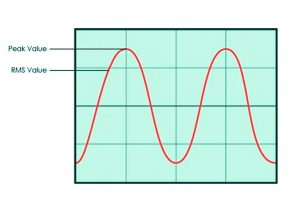
Besides, you won’t appreciate the distorted sound it’ll make. So, instead of peak power, look for RMS. It stands for Root Mean Square and indicates exactly how loud the speaker can get at a “safe” volume. RMS is gonna be significantly lower than peak power, but, again, it’s the only way you can check how loud the unit is going to be. Here’s a quick trick: RMS is usually 50% of the peak power. Keep this in mind.
#2: Cables vs. Bluetooth
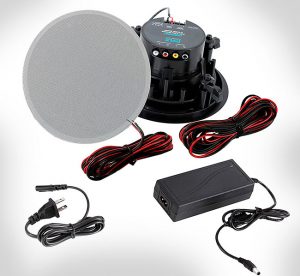
A Bluetooth-compatible speaker will pair up with your TV, computer, or, say, gaming console easily, with just a couple of clicks. Do remember, though, that unless the wireless distance is long enough, you’ll have problems with loudness and the audio won’t be very clear. This mostly refers to subs built into ceilings, of course.
#3: Passive or Active?
We just talked about cables running into the amp. But that will only be necessary if the subwoofer is passive. Most of them are, but the market has active speakers to offer as well. The difference is quite obvious: passive woofers can’t produce a sound on their own; active ones can because they have a built-in amplifier. AKA “powered”, active subs are more expensive, but they tend to be more practical.
#4: Material Quality + Resistance
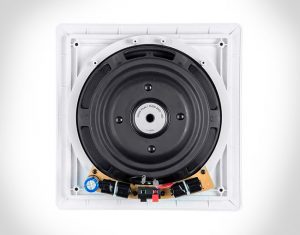
Next, look for “butyl rubber surround” in the specifications. This feature makes the subwoofer sound more defined and precise. As for resistance, the first thing to check for is protection against moisture. Humidity is the #1 enemy of any home audio/video equipment. Finally, see if the sub is secured against electricity spikes.
#5: The Frequency Range
How wide is the frequency range of the subwoofer? This is another question to ask before committing to it. For most subs, 20Hz-200Hz is what you can expect. With a bit more money, you’ll get an extended range – up to 300Hz. And then there are units that go as high as 20kHz (the two-way speakers). However, these devices are usually not very impressive in the low-end and only cover everything above 80Hz, which equals a “thinner” bass response.
#6: Extras
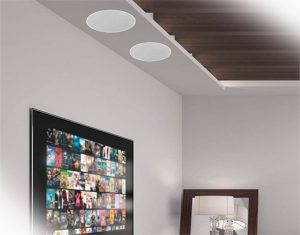
While the installation is usually a piece of cake, a manual will still give you peace of mind. While you’re at it, see that customer support is fast and helpful. Otherwise, you’ll be stuck with a faulty subwoofer for weeks and no means of replacing it. Sadly, most brands don’t cover their equipment with any type of warranty. Still, be on the lookout: chances are, you’ll find a brand that does offer a replacement/refund guarantee.
#7: Speaker Size
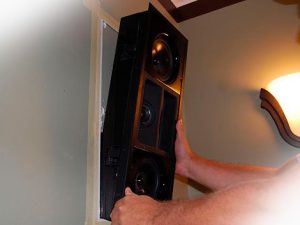
Make a habit of always measuring the gap behind the wall. If it’s not enough, go for a smaller/narrower subwoofer. Or, consider mounting it into the ceiling if that’s a possibility. And do keep in mind that the larger the drive, the better it will be at “handling” low-end frequencies. So, you’ll probably have to compromise and try to find a balance between quality and easy installation.
Best Stereo Speakers Under 500 ()
| Image | Product | |
|---|---|---|
Best Choice 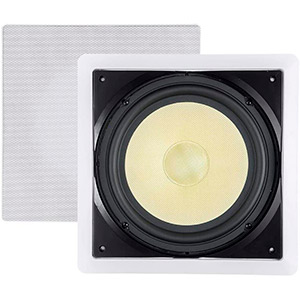 | Monoprice
| Check Price |
Also great 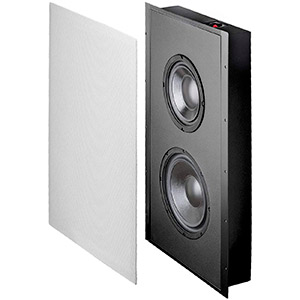 | OSD
| Check Price |
Best Value 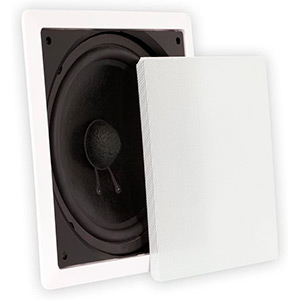 | Theater Solutions
| Check Price |
Non-Slip Grip 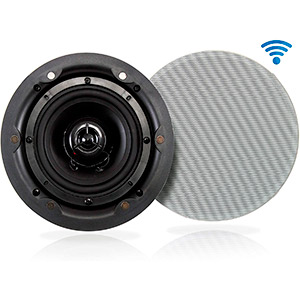 | Pyle
| Check Price |
Ergonomic Fit 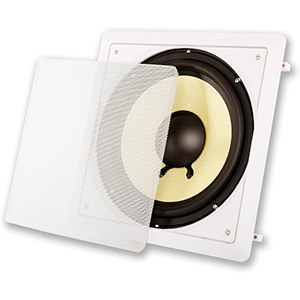 | Acoustic Audio
| Check Price |
Conclusion
Do you feel like standalone subwoofers are a bit too large for your bedroom/living room? But you still want to get those deep, punchy lows? As we just learned, there’s a great solution to this: an in-wall woofer. So, even if you don’t have a single inch to spare, you will definitely be able to enjoy a rich low-end. Just carve out some space in the wall, position the sub properly, and that’s it!
Today, we looked at five top-quality in-wall subwoofers from Monoprice, Pyle, Acoustic Audio, and others. They each have their big pros and minor downsides. Take your time and read carefully through each review, paying extra attention to the verdicts to make an educated choice. Can’t seem to take a pick? Check out the Buyer’s Guide!







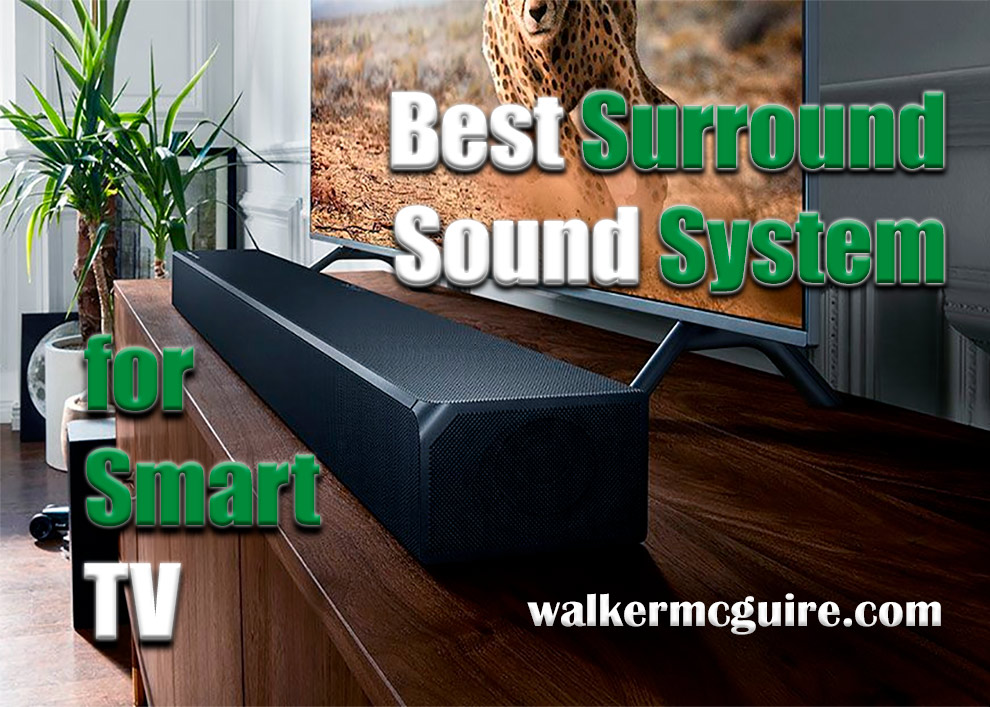
Leave a Reply